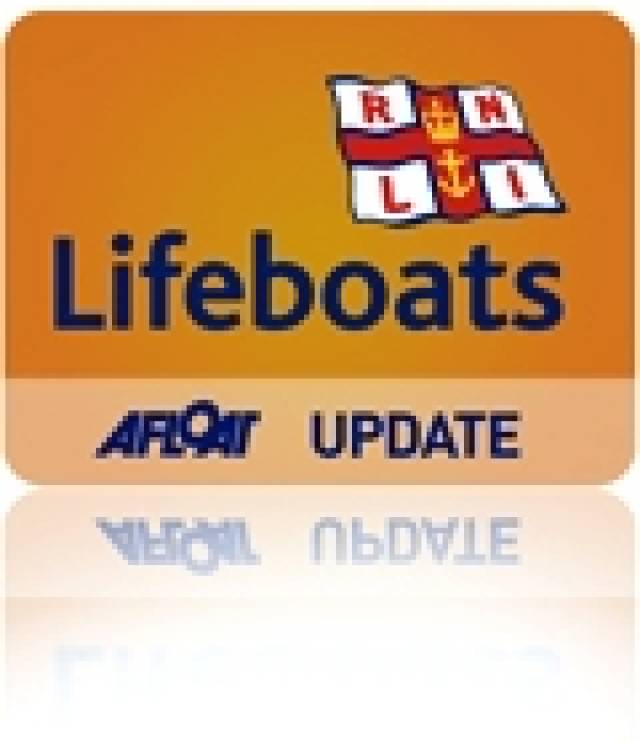At 03.41 this morning (Thursday 5 August 2010) Fenit RNLI lifeboat crew were requested to launch by Valentia Coast Guard to go to the assistance of a woman injured on the Great Blasket Island. The woman had fallen and sustained injuries to her leg and the Fenit RNLI all weather lifeboat was launched to recover her from the island and bring her ashore to Dingle to a waiting ambulance.
With no slipway or pier on the island and extremely shallow water at the landing point, the only way for the lifeboat crew to access the island was by launching the XP boat (a small inflatable boat carried onboard the lifeboat)
Four crew members went onto the island and made their way to the woman's house which was almost half a mile in and about 600 feet above sea level. The task was made more difficult due to the fact that the ground was extremely wet and slippery.
The woman was placed on a stretcher and carried back down the hill by the RNLI Fenit Lifeboat crew members. The stretcher was then placed across the xp boat and transferred to the lifeboat by the crew.
Commenting on the incident JP Brick of Fenit RNLI said, " This was a challenging callout for the lifeboat crew. The remote location made it difficult to access the island. The lifeboat crew needed to take a stretcher with them for the casualty and then return down the slippery terrain to the waiting XP boat. From there they travelled out to the waiting lifeboat and transferred the casualty onboard. This is where lifeboat crew training and equipment comes to the fore and the medivac was completed successfully."
On medical advice the casualty was brought to Dingle Marina where she was collected by ambulance and transferred to Tralee General Hospital
Related Safety posts
RNLI Lifeboats in Ireland
Safety News
Rescue News from RNLI Lifeboats in Ireland
Coast Guard News from Ireland
Water Safety News from Ireland
Marine Casualty Investigation Board News
Marine Warnings































































